Being Brave Advocates: Critical Ethnographic Action Research (CEAR) Project Approach for Social Justice and Advocacy in Early Childhood Education
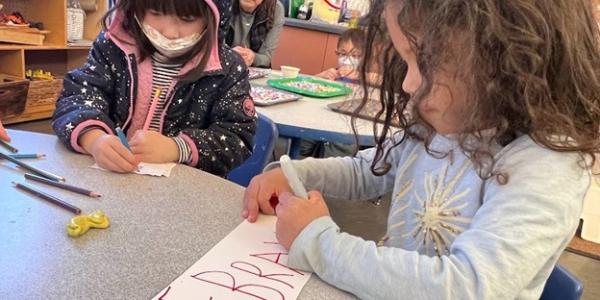
You are here
Sino Ako?
Pagkalipas ng maraming panahon, sino na nga ba ako?
Sa pag-iisa, ako’y napapaisip
Ako’y hinubog ng mga pinalad ko sa buhay
Kung sino man ako ngayon ay repleksyon din ng kultura na aking kinalakihan
Ako ay isang Pinay na titser sa Amerika,
Pinangarap ko’ng magturo mula sa pagkabata
Masasabing isang tahimik, pero masugid na tagapagtaguyod ng mga bagay na sa tingin ko ay nararapat
Intensyon at layunin ko’ng makatulong
At gamitin ang aking mga kaalaman at karanasan sa buhay
Ako ay mapanimdim,
Sa aking pag-iisa at pag-iisip, mas lalo ko’ng naiintidihan ang aking sarili
Ako ay kuryoso,
Hilig ko’ng magmasid at mag-aral upang palawakin pa ang aking kaalaman
Importante rin sa aking makisalamuha ang mga taong may parehang layunin
Sinusubukan ko’ng maging matapang habang patuloy kong tinatahak ang buhay
‘Di man malinaw ang kinabukasan at pagsubok ay patuloy na dadaanan
Mga layunin ko’t pangarap ang siyang mag-uudyok
Haharapin kong ang mga pagkakataong maging instrumento upang magdulot ng karampatan sa lipunan
Ito ako.
Who Am I?
How do I see myself now, after so many years?
In my solitude, I examine my thoughts
I am a person who’s influenced by my lived experiences
Who I am today is also a reflection of the culture that I grew up in
I am a Filipina American educator
It has been a dream to become an educator ever since I was young
A silent worker, but a passionate advocate
It is my intention and passion to be of service
To use my skills and experiences to enhance my practice
I am reflective
In my thought and reflections, I am able to better understand who I am
I am curious
Always looking for opportunities to grow in my understanding of the world
And surround myself with allies in this critical work
I strive to be brave as I continue on this journey
Though I know that uncertainties and challenges will continue to arise
I have my dreams and goals to motivate me
I look forward to creating a more equitable world for young children in the community
This is who I am.
As early childhood educators, we can transform our classrooms into brave, identity-affirming spaces for all children, especially if we aim to prioritize anti-bias and anti-racist work (Buchanan-Rivera 2022). However, to empower our children to embrace their own identities and the diversity around them, we need to first engage in identity-affirming, self-reflective practices ourselves.
In this article, I highlight the value of integrating elements of the Critical Ethnographic Action Research (CEAR) project, which originated in Oaxaca, Mexico, and how this approach inspired me to create an identity text—a “mediational tool to negotiate [. . .] identities and challenge coloniality” (López-Gopar 2016, 72). I also share how my teacher research helped me develop new perspectives on building authentic relationships with the children, their families, and my coteacher as we learned to acknowledge, understand, and value each other’s unique identities.
“Don’t Rock the Boat”: Confronting My Sense of Internalized Inferiority
In the spring of 2022, I returned to San Francisco State University to continue pursuing a master’s degree in early childhood education after a three-year absence. When I returned to graduate school, I was looking for an antidote to the imposter syndrome I carried with me, which I felt contributed to my low self-esteem as an early childhood educator. I wanted to understand how and why a bright and experienced educator like me, who had been in the field for 20 years, could still feel unsuccessful and have difficulty finding a sense of belonging. I was inspired to begin researching practices for cultivating a sense of pride in my work as an educator, as well as in my social identities. This journey began while I was taking the course, Narrative Inquiry and Memoir in Early Childhood Education with Dr. Isauro Escamilla in spring of 2022. It was during this time that I also learned about the CEAR Project.
Reflecting through the lens of CEAR (López-Gopar 2014) and the anti-bias education framework (Derman-Sparks & Edwards with Goins 2020), I realized that I had developed internalized inferiority. As Derman-Sparks and Edwards with Goins (2020) explain, internalized inferiority can contribute to a diminished sense of self and can result in feelings of shame due to harmful messages about a person’s social identities. To counter this, I engaged in self-study and critical reflection, using narrative inquiry (Clandinin 2013; Sisk-Hilton & Meier 2017) to unpack and reflect on the source of these feelings. This process allowed me to become more aware of my impulse to self-limit based on the negative feedback that I receive from the people around me.
In my teacher journal, I wrote about experiences of receiving overt and covert messages through my interactions with those I grew up with, learned from, and worked with in the past. As an immigrant and now a United States citizen, I have experienced the harmful effects of a colonial mentality. As a result, I internalized harmful messages—messages like “Don’t rock the boat” and “You’re an overachiever”—that led me to erroneously believe that if I didn’t talk, look, or behave like the majority, I wasn’t capable nor worthy of being viewed as a competent member of society.
My Research Questions
I began to formulate research questions to guide my self-study. I asked the following:
- How can the anti-bias education framework and certain elements of the CEAR Project approach aid me in setting the stage for becoming a brave(r) social justice educator?
- How did creating a brave space, classroom brit, and a curriculum in my classroom support my students in exploring topics around diversity, advocacy, and their engagement in identity-affirming practices?
Barbara Henderson (2023) discusses the benefits of a researcher choosing a topic that is meaningful and important to them, both personally and professionally. As I reflected on my own research, I recognized that everyone carries their own set of social identities, including cultural, ethnic, linguistic, gender, ability identities, and more. My students and their families, as well as my colleagues, carry them too. I thought about the times children wondered and formulated theories about the differences they saw in those around them. I’ve realized the importance of supporting them in viewing their identities in a positive light, engaging them in critical conversations about differences and similarities, and helping them acquire the skills to advocate for themselves and others, so they can stand up for what is right, fair, and just. These realizations motivated me to engage in identity-affirming practices for myself as I acknowledged that I could not give what I did not have.
Creating Identity Texts
The CEAR Project was a huge influence and a source of motivation in affirming my identity as an educator of color. A part of this work involved the unpacking of my identity texts. Identity texts can serve as a “‘counter-discourse’ to the implicit devaluation of students’ abilities, languages, cultures, and identities that occurs in classrooms where students’ preferred ways of meaning making and home languages are ignored or treated with ‘benign neglect.’” These texts “can be written, spoken, signed, visual, musical, dramatic, or combinations in multimodal form” (Cummins & Early 2011, 3–4).
In search of my identity and voice, I reclaimed Tagalog, my home language; that’s why I wrote a “dual language identity text” in the form of a poem. (See “Sino Ako?/Who Am I?” above.) Creating identity texts, including this poem, allowed me to identify and reflect upon the role models within my family, especially my grandmothers, who, as educators themselves, helped pave a way for me to emerge as a courageous teacher leader. This practice also allowed me to reflect on how my ancestors had to negotiate their own identities in their own times and contexts while showing courage and leadership.
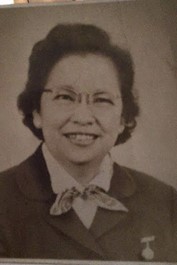
Lola Rizalina
In reflecting on my identity, I thought about my Lola Rizalina’s courage. She became an international student in her late forties at Syracuse University in New York, where she pursued her master’s in education. She was thousands of miles away from her home and family back in the Philippines. After earning her master’s in education and guidance counseling, she returned home and became the dean of student affairs at the Philippine Normal College (now known as Philippine Normal University), a teacher preparation and research university in Manila.
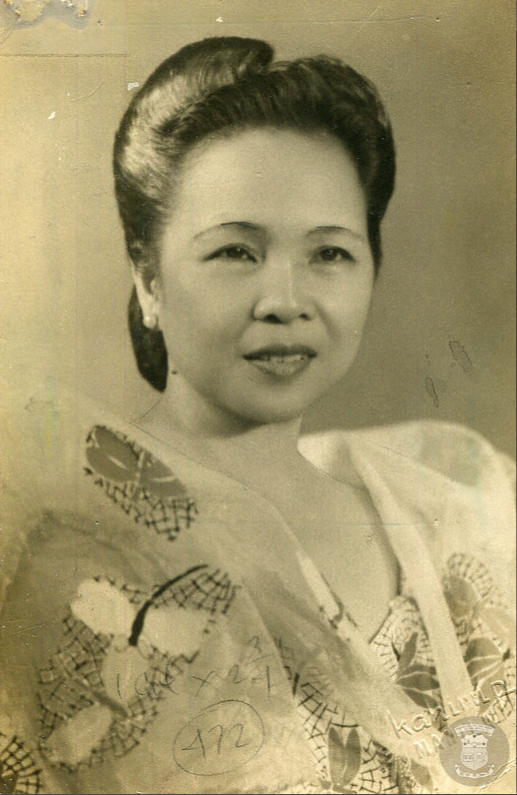
Lola Geronima (This picture is in the public domain)
My work as an equity-minded educator was also inspired by my lola’s sister, Geronima, who was a public school teacher for many years. She became a suffragette, fighting for women’s right to vote in the 1930s, and then broke the glass ceiling by becoming the first woman senator in the Philippines. She went on to champion laws that helped change the educational landscape in the Philippines, including the Free and Compulsory Education Act of 1953, which helped to establish a system of free and compulsory education for all children in the Philippines. Both of my lolas’ stories are powerful forces that have shaped my evolving identity, hopes, and dreams. Their bravery has inspired me to reject limitations and to do what is right for me, the young children I teach, and their families in our classroom and school community.
Setting the Stage for Brave Anti-Bias Work in a Transitional Kindergarten Classroom
In September 2022, I began teaching in a transitional kindergarten classroom in an inclusive Jewish preschool in the San Francisco Bay Area. I adapted strategies to sustain our communal, anti-bias work based on four anti-bias education goals, which included:
- Creating a brave and identity-affirming space
- Co-constructing a classroom brit with the children
- Using literature and materials
- Engaging in meaningful dialogue with children
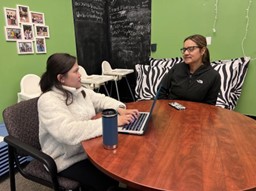
My coteacher, Maestra Ana, and I created a space for all members to feel empowered to share their lived experiences and to learn respect for one another’s learning processes and journeys. We adapted the practice of creating a classroom brit, which is a list of guiding principles that remind us how to treat one another and ourselves within the learning environment (Schwartz 2016). A brit differs from a classroom rule chart in important ways; namely, the children are involved in developing the guiding principles, which highlight values and desired goals, instead of a top-down approach that involves the teachers dictating behavioral guidelines that may include negative language or phrases (i.e., what not to do or phrases that begin with “no”). Creating the brit is community-based: everyone’s voice is valued and elevated throughout the process.
Maestra Ana and I co-constructed our classroom brit with the children. As a class community, we decided to focus on the following principles during the fall: “be safe,” “be respectful,” “be kind,” and “be fair.” In the spring, the class added “be brave” and “be yourself.” The children created signs for our brit, which we displayed on the classroom wall and referred to throughout the year.
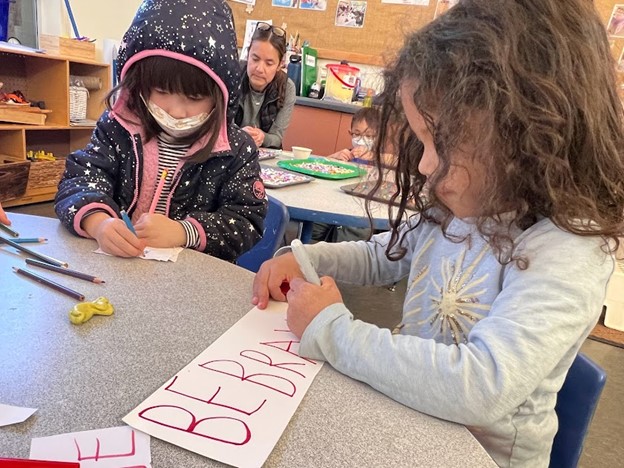
Throughout the year, we revisited and reflected on examples of how our classroom brit was showing up in our interactions with one another through photos and videos. Over time, the children began to embrace the meaning of our brit and to use the language when they needed to stand up for what they considered right, fair, and just. As one of the children said, “Be fair, that’s on our brit!”
As the children shared conversations about our class brit with their families, families organically began to create identity texts in the form of their very own family brits. One family shared the hope that their child would continue being himself and using his voice to stand up for what is right. Another family shared that they were supporting their own children in coconstructing a sibling brit. As one of the family members said, “What we love about how you created the classroom brit is that the children were involved. It wasn’t just the teacher telling them what to do, but their voices were heard and valued.”
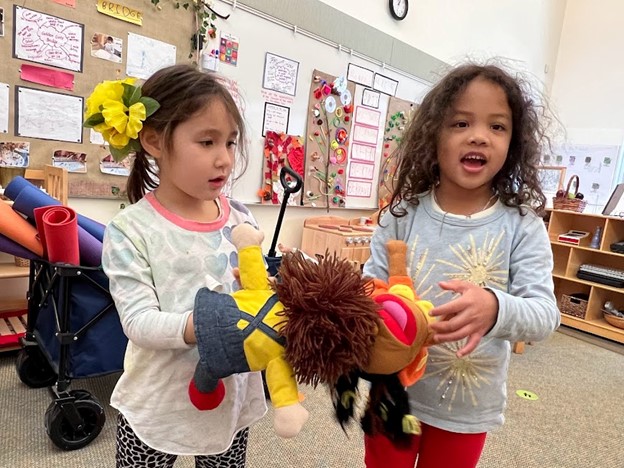
As we grew in our curiosity about the diverse identities in our class, my coteacher and I brought in books and added materials to our learning environment to help us acquire new language and ways of understanding each other’s differences and similarities. One book we read with the children was Just Ask! Be Different, Be Brave, Be You, by Justice Sonia Sotomayor (2019). Not only did this book give us the opportunity to talk about the “tools'' that we all need to thrive in our everyday lives, but it also allowed us to learn that just like the characters in the book, we have different needs, abilities, and strengths too. As a class, we adopted the motto, “Just ask! Be different, Be brave, Be you”—if you’re curious about something that is unfamiliar or confusing, just ask someone. This gave us additional opportunities to have dialogue and ask questions to learn more about social issues in our classroom community of learners, both young and adult.
To further discuss differences and similarities, we introduced two persona dolls, who became regular members of our class. These persona dolls carried identities that represented some of those of the children. One of our dolls was Iheoma, a 5-year-old who is proud to be Black and Chinese. She loves eating chicken curry for lunch in school. Meanwhile, Mateo, also 5 years old, lives in two houses. Some days, he stays with his mom, and other days, he stays with his dad. He is a great big brother and loves to build with Legos. Sharing these dolls with the children gave them the opportunity to broaden their understanding of similarities and differences across the identities that exist in our classroom and to celebrate the diversity within our group.
In a field that continues to evolve due to the diversity among the population of children and families we serve, it is imperative for early childhood educators to embark on an anti-bias journey. Engaging in this process is vital in creating identity-affirming and culturally responsive learning spaces for young children, their families, and ourselves. Doing this work takes time, energy, persistence, bravery, and a commitment to ongoing education. Therefore, it must begin with a strong intention. According to Hammond (2015), “Intention is the starting point for preparing yourself for improving your culturally responsive teaching practice. . . . The commitment to be an effective educator of culturally diverse dependent learners builds the stamina and courage to persevere when the process gets challenging” (55). At the beginning of my journey to be more courageous in enacting my beliefs around identity-affirming practices and anti-bias education, I worked to envision myself as a social justice educator. To do this, I needed to pause and recognize my strengths before I could begin supporting my children in cultivating their own strengths.
Engaging in critical conversations with young children about social issues that are meaningful to them provides opportunities for empathy to develop and relationships to thrive. By cocreating our classroom brit, the identity of our classroom community organically unfolded, and the children revealed that they were capable of engaging in critical conversations with peers and familiar adults. How we use our voices as educators matters: young children are constantly watching and learning from us as we address critical questions, face challenges, and encounter potential biases in the classroom. Through this experience, I have found that honest conversations in the classroom, between children, teachers, and families, allow for co-construction of learning and ideologies where adults’ and children’s voices all matter equally.
Photographs: courtesy of the authors
Copyright © 2023 by the National Association for the Education of Young Children. See Permissions and Reprints online at NAEYC.org/resources/permissions.
References
Buchanan-Rivera, E. 2022. Identity Affirming Classrooms: Spaces That Center Humanity. Routledge. New York, NY: Routledge.
Clandinin, D.J. 2013. Engaging in Narrative Inquiry. Walnut Creek, CA: Left Coast Press.
Cummins, J., & Early, M. 2011. “Introduction.” In Identity Texts: The Collaborative Creation of Power in Multilingual Schools, 3-19. Stoke on Trent, UK and Sterling, USA: Trentham Books.
Derman-Sparks, L., & J.O. Edwards. With C.M. Goins. 2020. Anti-Bias Education for Young Children and Ourselves. 2nd ed. Washington, DC: NAEYC.
Hammond, Z.L. 2015. Culturally Responsive Teaching and the Brain: Promoting Authentic Engagement and Rigor Among Culturally and Linguistically Diverse Students. Thousand Oaks, CA: Corwin.
Henderson, B. 2023. “Introduction.” Voices of Practitioners. Vol. 17. NAECY.org/resources/pubs/vop/dec2023.
López-Gopar, M. E. 2014. “Teaching English Critically to Mexican Children.” ELT Journal 68 (3): 310–320.
López-Gopar, M. E. 2016. Decolonizing Primary English Language Teaching. Bristol, UK: Multilingual Matters.
Schwartz, P.J. 2016. “To Be in Brit With Each Other: Creating Classroom Covenants.” The Jewish Educator (Summer). thejewisheducator.files.wordpress.com/2017/01/schwartz.pdf
Sisk-Hilton, S., & D.R. Meier. 2017. Narrative Inquiry in Early Childhood and Elementary School: Learning to Teach, Teaching Well. New York, NY: Routledge.
Angela Aquiliza, MA, is an educator at Bing Nursery School (Stanford University) and a developmental editor with Voices of Practitioners.